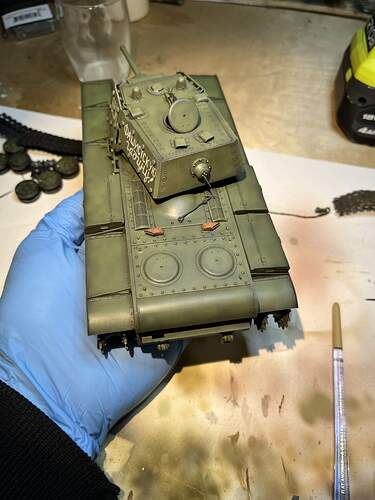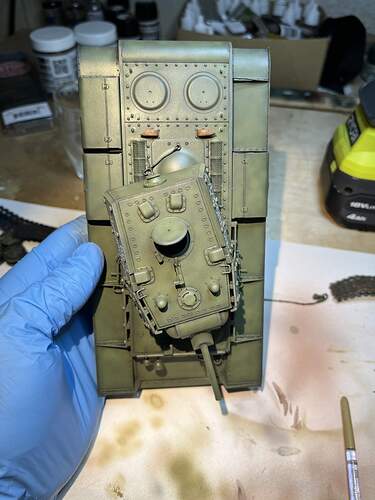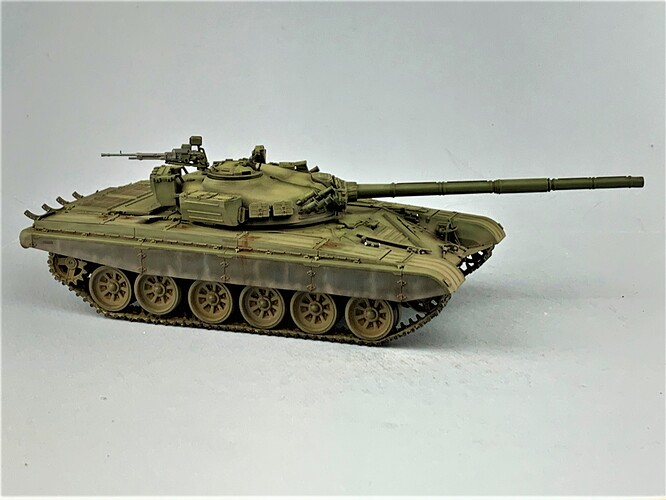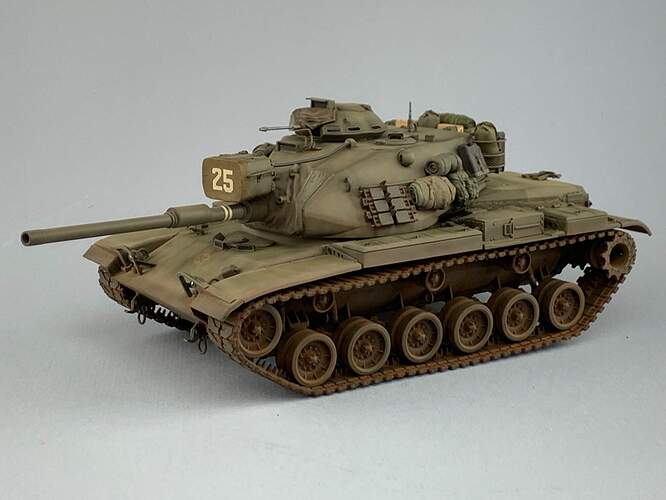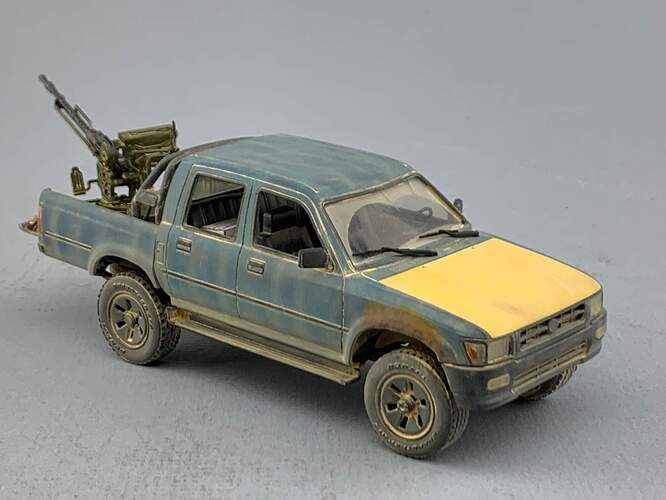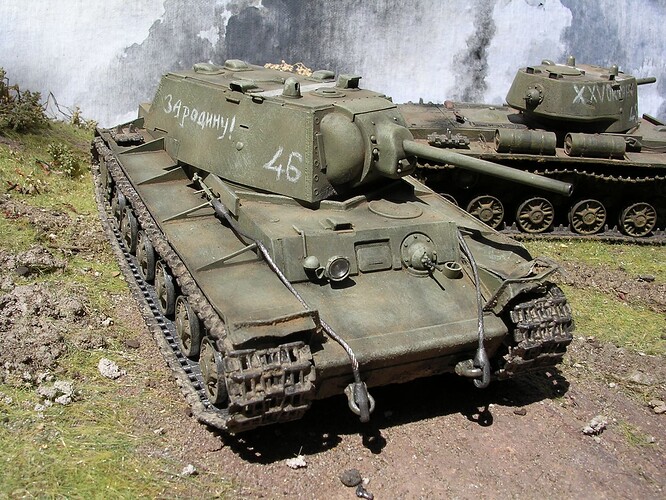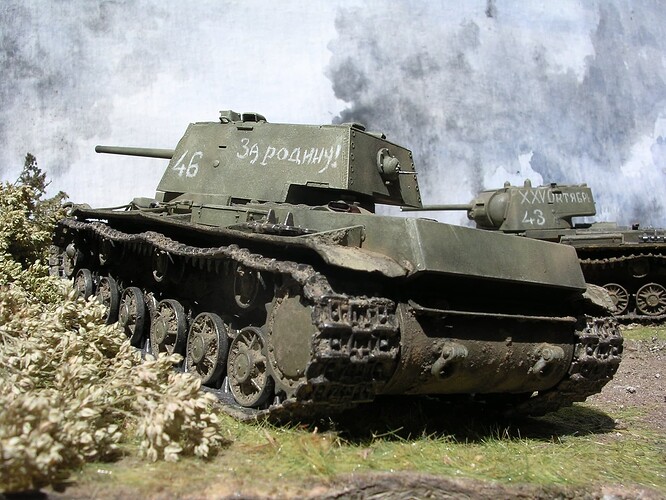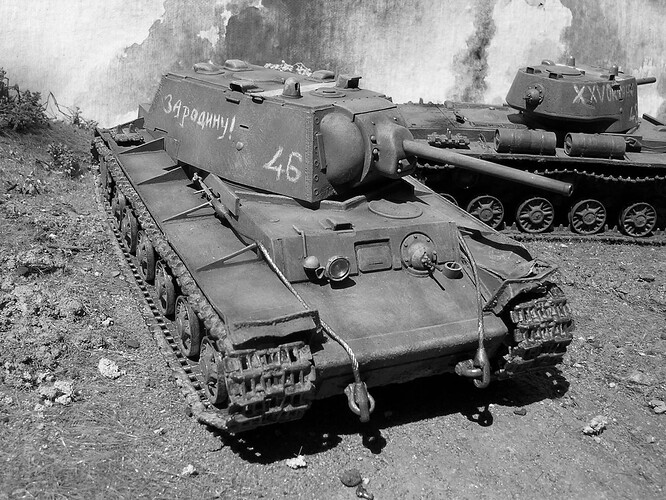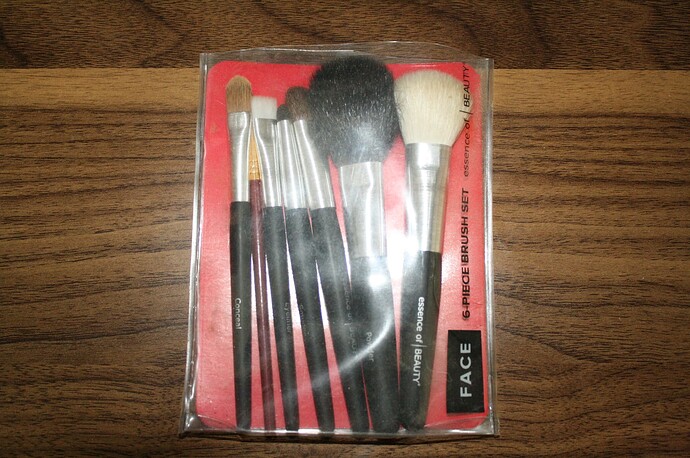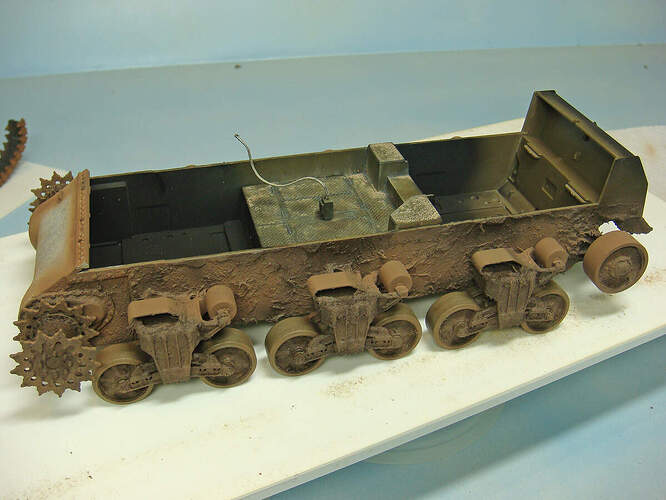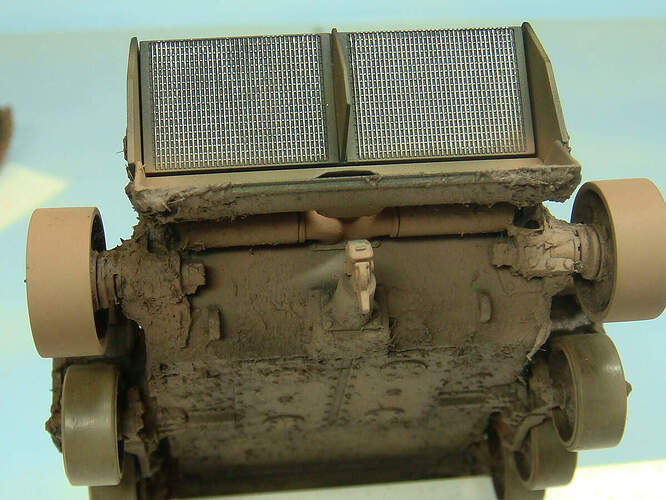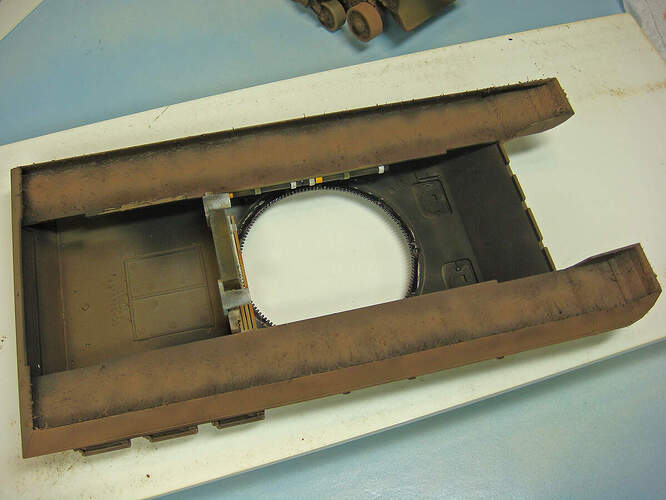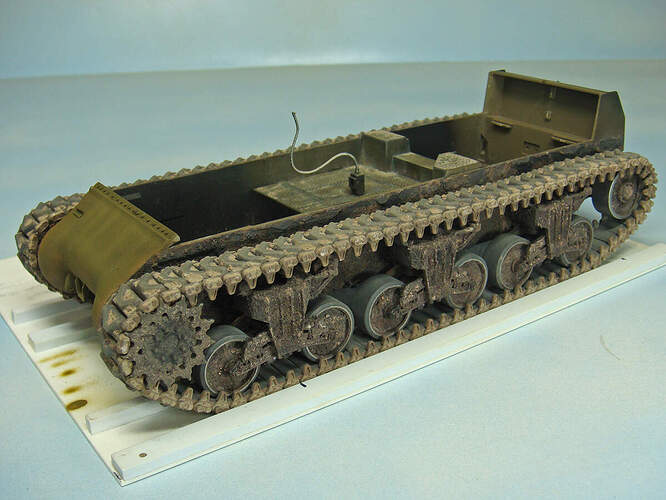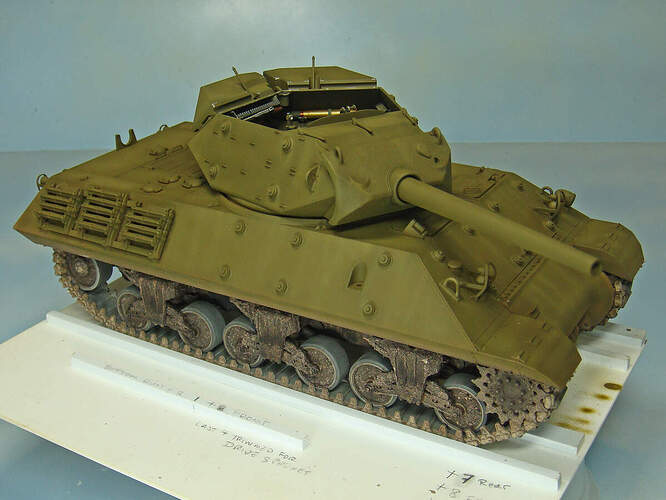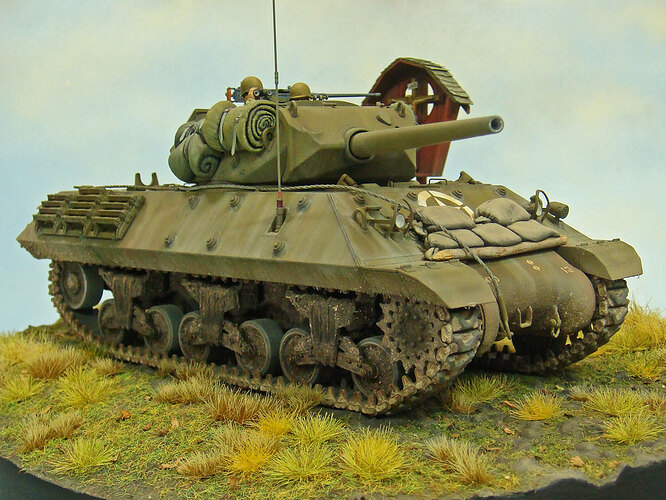I’ll start off by saying sorry for the long post, and that I know this is a huge topic with differing opinions.
I used to be pretty daunted by any weathering. I would paint a kit fairly monotone in the base color, maybe a camo. Paint the details like tools, add the tracks and call it a day.
Since I got back into the hobby more seriously I’ve been experimenting with weathering techniques, and I think I’ve started to get color modulation with the airbrush, pin washing, and dry brushing down, allowing details to pop and adding visual interest.
One thing I still really struggle with is getting over the hump with is making the tank look lived in, I don’t care to much for heavy chipping. But I would like to go for a dirty look that looks like the tank has been used. I know the basic techniques or pigments, possibly airbrush dusting, and mud type products.
Problem is, I watch tons of tutorials but can’t seem to make my test runs on old kits look remotely convincing.
Where I am now, is working on a Trumpeter KV-1. Base coat was done with a black basing technique and a bit of post shading. I was really happy with the paint. Next I did a pin wash, followed by light dry brushing. At this stage I am pretty happy with how it looks!!
Trouble is it looks factory fresh. I plan to add exhaust stains with the airbrush. But I also want to add some weathering to the lower hull and running gear in the form of dust, old dry muddy look, dirtying up the tracks and running gear, and adding some light weathering and dust to the rest of the hull and turret.
My question is what do you typically to do to achieve this. I am looking for as much info as possible.
- how do you weather the lower hull/running gear? Pigments? Some other method? If pigments, do you put them on dry and blend, make a slurry with water and apply them blend, etc. looking for as much detail as possible
- how far up the hull/turret should expect heavier mud/splatters
- what technique do you use for light dust and such.
Looking for as much advice as possible. This is a weak area of mine
